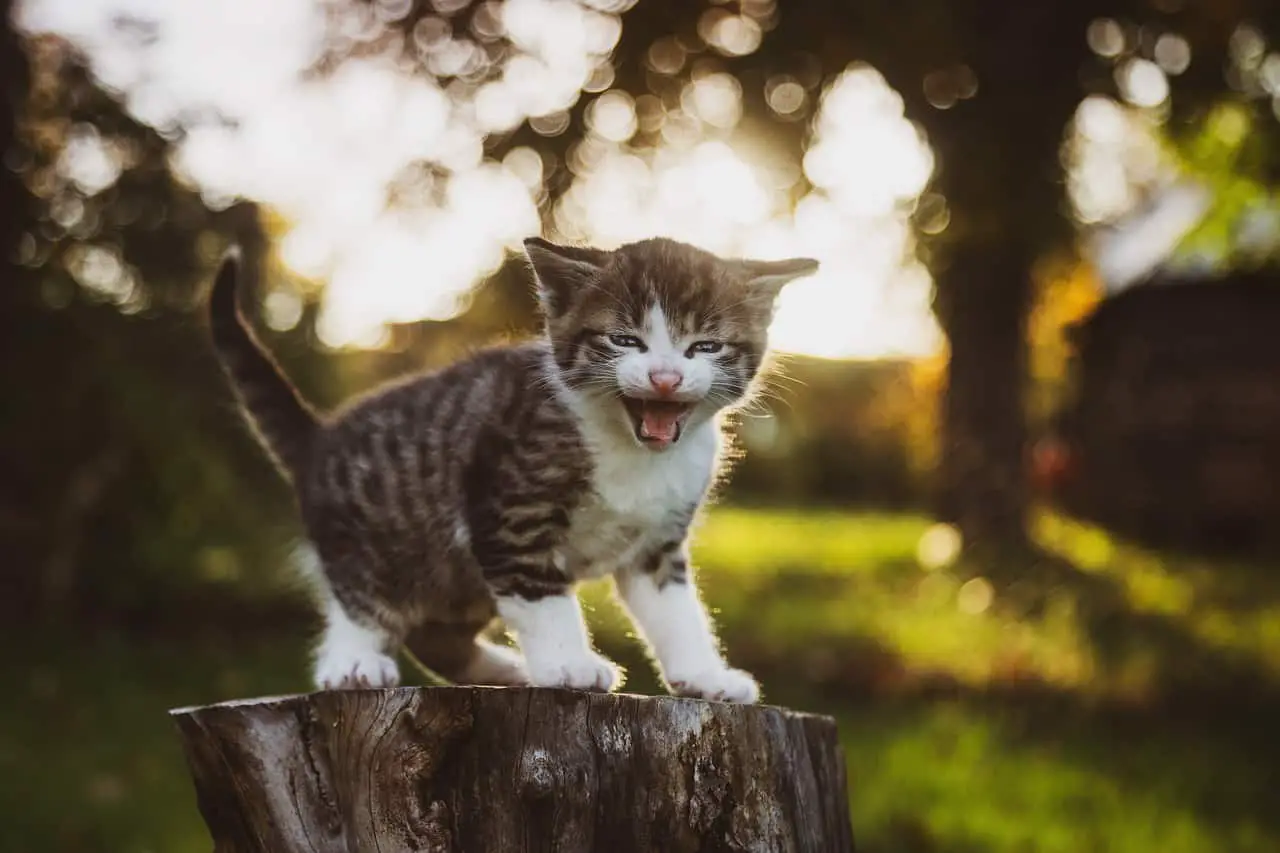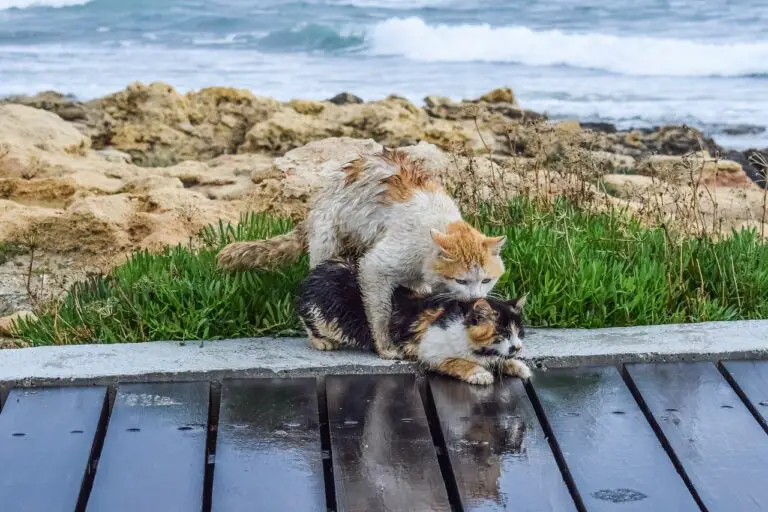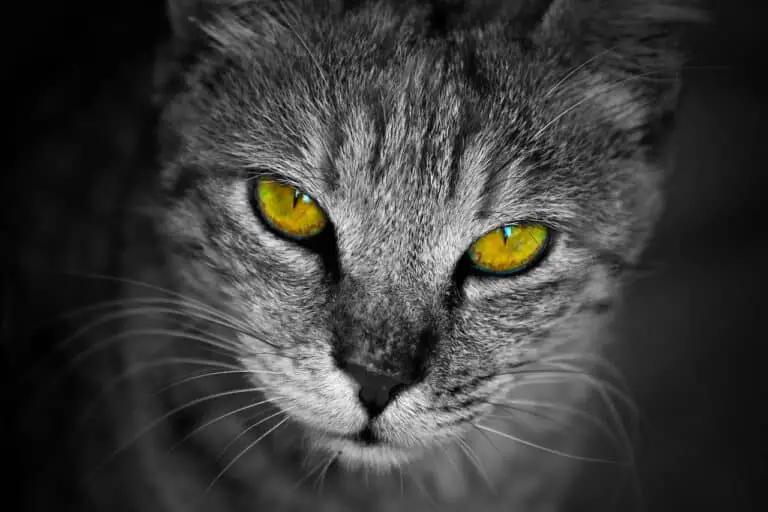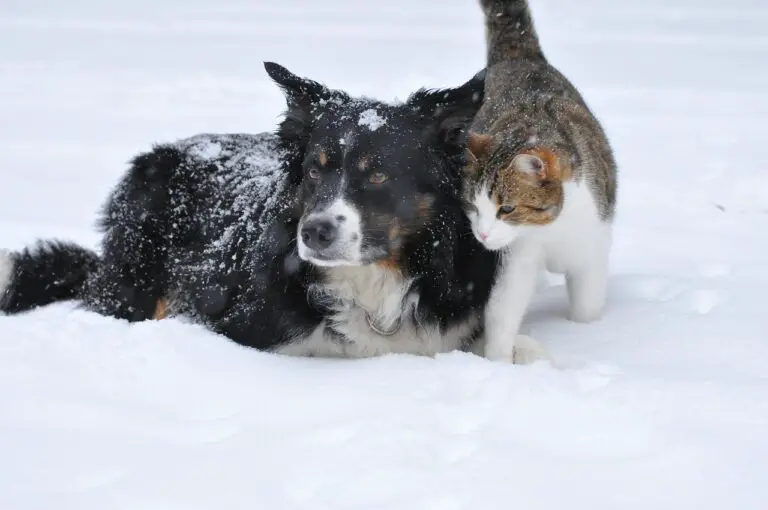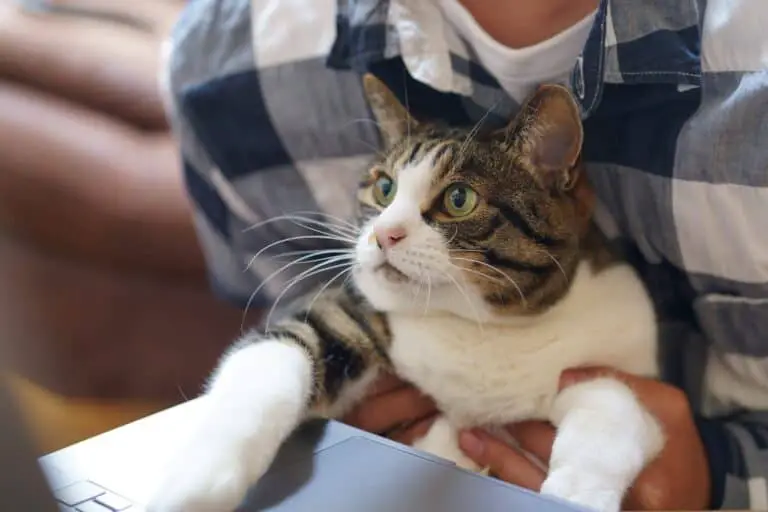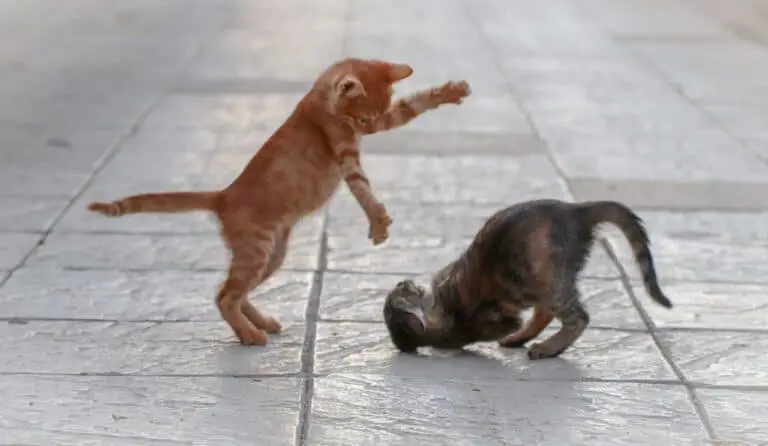DO CATS CONTROL THEIR TAILS? 10+ TAILS MOVEMENTS
Do cats control their tails? Have you ever wondered if your cat is controlling his tail, or if it is the tail that controls the cat? Does he have any way to tell his tail when to move and how to move? This is a fascinating question, to which I am going to figure out an answer.
Contrary to what most people think, cats actually have control over their tails. They can move their tails with voluntary and involuntary movements. Involuntary movements can be compared to blinking eyes in humans, and similar movements, cats, can move their tails involuntarily when confronted with sudden events. Cats can move their tails voluntarily to communicate with other cats and humans and let others know how they feel about what is happening.
Let’s see how cats control their tails.

DO CATS CONTROL THEIR TAILS? OR TAILS CONTROL CATS?
Most people are under the impression that cats move their tails involuntarily, based on their emotions or reactions to things happening in the environment. It possible to come to think like this because cats seem so random in what they do.
We can see that when they are upset, their tail move in a certain way, and when they are comfortable and want to greet us, their tail goes onto another position. One can come to think that they move their tail in response to something.
In actual fact, tails are controlled MOSTLY voluntarily. They use their tails to communicate with humans and other cats and to aid their movements. Cats can hold their tails up high or pull it down between their legs. Cats can also swish their tails from side to side. Cats can move the tip of their tail independently from the rest of the tail, and much more. It is a bit like their postures. You can understand a lot from the tail positioning like you can understand a lot from a cat’s body posture.
WHAT IS CAT TAIL COMPOSED OF?
Cats tails are composed of a mixture of bones, nerves, muscles, and blood vessels. The bones of the tail (vertebrae) are bigger at the base and get smaller toward the tip. Soft discs cushion the spaces between the vertebrae and allow flexibility. The tail muscle and nerves facilitate tail movement and play a role in bowel control. This complex tail structure of bone, muscles, nerves, and blood vessels can easily be injured.
The cat’s tail is actually an extension of its spinal/backbone. Therefore, a cat’s tail consists of both bone and cartilage, and they act as connective tissues. If you want the technicalities, here it is:
The tail is composed of up to 20 supple and articulated caudal vertebrae (this is the bones’ name in cat’s tails), depending on the species, breed, and individual. These vertebrae are enclosed by a versatile musculature making the various segments, especially the tip, capable of finely graded movements that lift the tail, move it from side to side, or draw it down toward the anus or between the hind legs. The caudal or tail muscles lie on the lumbar vertebrae and sacrum (of the lower back) and tail vertebrae and insert on the caudal (tail) vertebrae exclusively. The muscles are attached to the tail vertebrae by tendons. The most posterior tendons attach to the last tail vertebrae. (Ref. PetPlace.com)
The bones of the tail are bigger at the base and get smaller toward the tip.
Nerves run throughout a cat’s tail, which helps them pick up information from the environment around them, essentially allowing them to “feel” with their tail. The tail is part of a cat’s spinal cord and contains nerves from both the central and sympathetic nervous systems. Nerves send signals throughout the body to help the body coordinate a response to the environment. (ref. Petozy.com)
The muscle that is primarily responsible for tail movement is the Sarcocaudalis muscle. Whenever your cat moves its tail into a different position, this muscle is at work. (ref. Petozy.com)
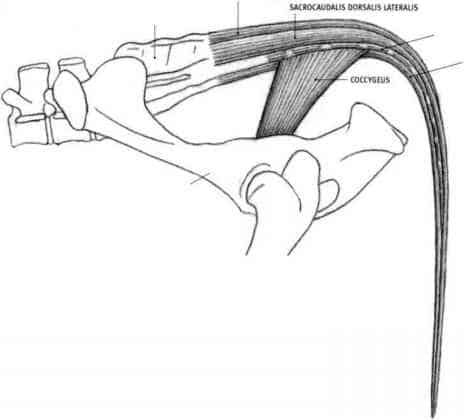
The tail also contains blood vessels and a tail vein that help with the circulatory system. A cat’s tail also contains scent glands, called caudal glands—these aid cats in scent-marking their territory. (ref. Petozy.com)
Do cats control their tails? What is your experience with this? Let us know in the comments below if you have seen your cat controlling his tail.
WHAT DOES A CAT’S TAIL MOVEMENTS MEAN?
We have established that cats can control their tails movements mostly and that some movements are involuntary. But what do they mean? It is important for cat owners to understand cats’ tail’s movements and what cats want to communicate when they move the tail in a certain way.
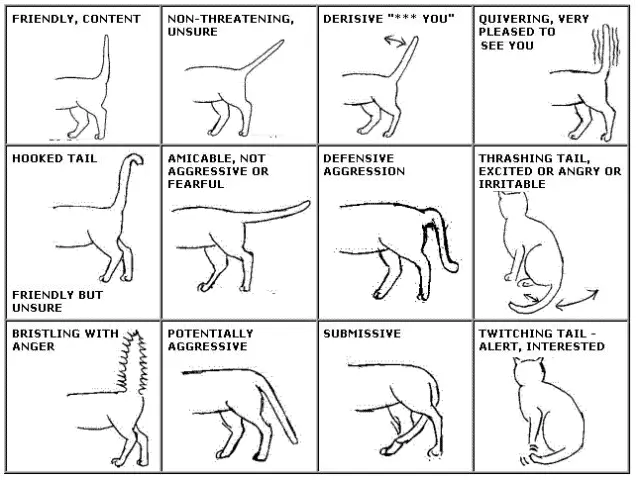
Here are the most important tail movements and what they mean:
1.TAIL STRAIGHT UP IN THE AIR: If a cat moves towards you with the tail straight up, the cat is friendly and comfortable with you and the environment. The cat is happy when he moves the tail in this position, so ideally, we want to see a cat using the tail in this way when he is around us.
2. TAIL STRAIGHT UP IN THE AIR AND CURVED AT THE TOP LIKE A HOOK: A tail that is straight up and takes the shape of a hook at the end is a signal that your cat is friendly and wants to play with you. He is really in a good mood, and you should take some time to pet and interact with your cat.
3.TAIL STRAIGHT DOWN: If you see your cat moving near you with the tail straight down, observe him, he is not in a good mood and can attack you. He feels threatened, and he is about to take the necessary measures. It is a sign of aggression. You could try to understand what is happening that makes your cat act this way and resolve the situation before he decides to attack.
4.TAIL TUCKED AWAY OR BETWEEN THE PAWS: When a cat puts the tail between the legs and tucks it away, he is petrified, and he is submitting to a higher force. Cats do this when they lose a fight or something in the environment that scares them a lot. My cat uses to do this even when I run behind him, and I get him in a corner. You can really see that he is submitting.
5.TAIL BECOME ALL PUFFED UP: Cats that puff up their tail are frightened, and he is trying to scare off potential danger. He is trying to look bigger and scary. In this way, he hopes to look scary enough to send away potential threats. Whenever I see my cat doing it, he makes me laugh, but it is a serious business for him.
6.TAIL SLAPPING BACK AND FORTH: If your cat slaps the tail back and forth, it means that he is becoming upset and he is annoyed about something. If you are annoying him or petting him too much, he may start moving his tail back and forth, slapping it on the floor. He may be upset about something when he does it. It is not a good sign. The annoyance source needs to stop, or a cat may decide to attack by biting or pawing at the target.
7. TAIL TRASHING OR SWISHING SLOWLY: You may have observed your cat playing, he usually move his tail from one side to another slowly just before jumping on his toy, or your hand. He is usually exited and he is targeting a pray. He is may also do this if there is an source of irritation for him. Pay attention to this tail position, your cat is really exited and he may stalk a toy or another cat.
8.TAIL IS WRAPPED AROUND A HUMAN BODY PART OF OTHER CAT: If a cat wraps his tail around your leg or another cat, you can be sure that he is hugging your or the other cat. It is a nice gesture of love and affection. It is also a sign of trust as cats do not let people touch their tails often.
9. TAIL IS QUIVERING WHILE STRAIGHT UP: If a cat’s tail is quivering while seeing you, he is delighted to see you, very friendly and comfortable. He may have missed you, and finally, you have arrived. He is quivering his tail to show you his happiness.
10. TAIL STRAIGHT AND LEVEL WITH THE SPINE (PARALLEL TO THE GROUND): Cat is amicable, not scared, but not particularly happy either. It is a sort of boredom, combined with unease feeling, but still friendly.
11. CAT TAIL TIP IS MOVING: sometimes, you can observe only the tip of the tail moving. In this case, the cat may be alerted and interested in something going on around him. It is not something to be concerned with. When the source of his interest is not there anymore or is not interested anymore, the tail will stop twitching.
12.TAIL HANGING DOWN WITH DIP OR CURVE NEAR THE BASE: This is another sign of trouble; the cat is afraid and aggressive. He is trying to defend himself against danger. Therefore he may be aggressive or attack the source of the danger.
RELATED QUESTIONS
Here some related questions to: ‘Do cats control their tails?” and related answers:
- Why do cats thump their tails when lying down? And why cats wag their tails when lying down?
It is never a good sign when a cat moves the tails back and forth, or he is thumping it down. He is annoyed and irritated. If you are petting him, It is better to stop before deciding that he has enough and decides to bite your hand. If you are not petting him, he is really annoyed about something going on around him.
Sometimes a cat that acts weird and wags his tail when lying down can be a sign of illness, but it is not the usual and common reason.
- Do cats feel their tails?
Yes, cats feel their tails and move them voluntarily and involuntarily. Some cats are susceptible to their tails and do not let others touch them, some other cats are less sensitives, but still, they can feel their tails.
- Why does my cat slap me with his tail?
Cats slapping owners with their tails can have different meanings based on the situation. They could be upset because you are doing something they do not like. Therefore they move their tail to hit you and make you stop. From the other side, they may be in a loving mood and may try to hug you with their tail, or hug your hand, but coming off like a slap. It can happen.
Cats may use their tails to wrap it around your legs or hands; they can do the same with other cats or people they love. Or they can use their tail like a whip and keep your hands off of them. You can understand what your cat wants to tell you based on the circumstances.
- Why do cats wag their tails when sleeping?
Normally cats are not moving their tails when sleeping unless they are dreaming, and in this case, you may see the tail is twitching. From the other side, if you start petting your cat when he sleeps, he may move the tail back and forth or start thumping it down.
In this case, he is too comfortable sleeping and doesn’t want to move. He doesn’t want to be disturbed or touched. But he knows it is you, so he doesn’t really bother to open his eyes. He is just telling you to stop via the tail. My cat does it all the time.
If I pet him while he sleeps, he may start moving his tail. In this case, I leave him alone. In some cases, he starts purring and showing me the belly. In this case, I am delighted to pet him.
CONCLUSION
Do cats control their tails? I hope we were able to answer your question. If you want to add anything, leave it in the comments below.

